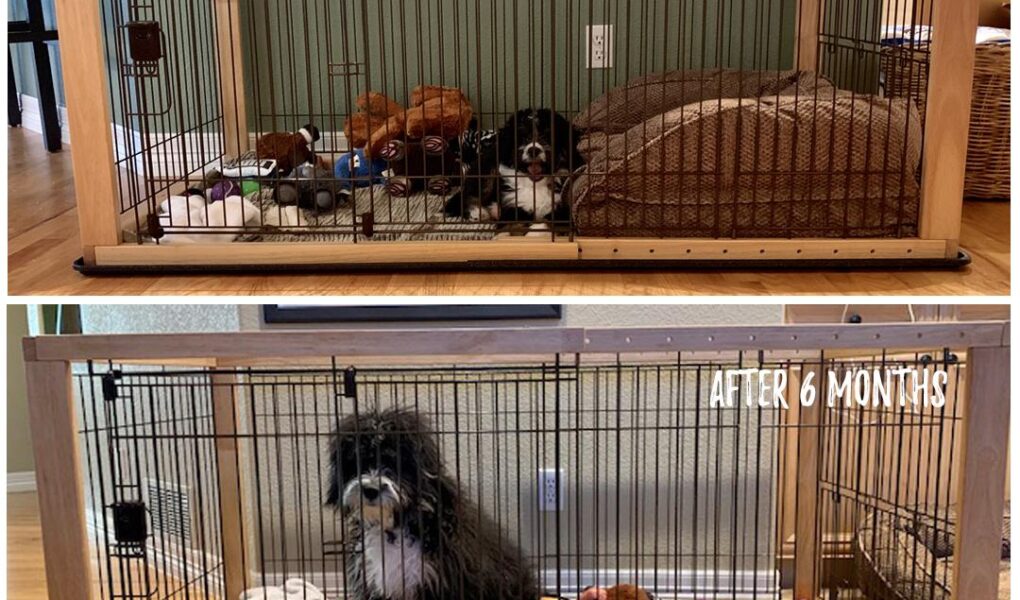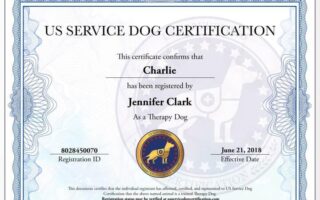Bringing a new puppy into your home is an exhilarating adventure filled with wagging tails, playful barks, and the promise of companionship. However, this joyous experience also comes with its share of responsibilities, and one of the most crucial aspects of raising a well-adjusted pup is effective kennel training. Far from being just a place for your furry friend to sleep, a kennel—when used appropriately—can become a safe haven that fosters comfort, security, and discipline. In this article, we will explore the principles of kennel training, providing you with practical insights and evidence-based strategies to help your puppy not only adjust to their new environment but also thrive within it. Whether you’re a first-time pet owner or a seasoned dog enthusiast, understanding the nuances of kennel training can pave the way for a harmonious relationship between you and your beloved canine companion.
Table of Contents
- Understanding the Purpose of Kennel Training for Your Puppy
- Creating a Safe and Comfortable Space for Your Pup
- Establishing a Consistent Routine for Successful Training
- Addressing Common Challenges and Solutions in Kennel Training
- Q&A
- Future Outlook
Understanding the Purpose of Kennel Training for Your Puppy
Puppy kennel training serves multiple essential purposes that contribute to your pet’s development and well-being. First and foremost, it helps establish a safe space for your puppy, offering them a cozy environment where they can relax and feel secure. This designated spot can also be beneficial when introducing your puppy to new experiences or when they need some quiet time away from distractions. Additionally, kennel training plays a pivotal role in housebreaking; by encouraging your puppy to hold their bladder while they’re inside the kennel, you can reinforce positive bathroom habits and reduce accidents in the house.
Furthermore, kennel training fosters independence in your puppy, teaching them that being alone for short periods is normal and safe. This gradually reduces separation anxiety and helps them grow into a more confident adult dog. Training sessions can also become a part of your bonding experience, as you can utilize this time to teach them commands and basic obedience. To sum it up, the benefits of kennel training extend beyond mere containment; they shape your puppy into a well-adjusted, happy companion. A quick overview of kennel training benefits can be found in the table below:
| Benefit | Description |
|---|---|
| Safe Space | Provides a secure, personal area for your puppy. |
| Housebreaking | Encourages positive bathroom habits. |
| Independence | Reduces separation anxiety through gradual alone time. |
| Bonding | Enhances your relationship through training interactions. |
Creating a Safe and Comfortable Space for Your Pup
When preparing a space for your puppy, focus on both safety and comfort to ensure a positive kennel training experience. Start by selecting a quiet location away from foot traffic and loud noises to help your pup feel secure. Use soft bedding that provides warmth and support, making the kennel feel more like a cozy den. Adding a few of your puppy’s favorite toys can also provide comfort and help to ease any feelings of anxiety. Consider the following essentials for creating a welcoming environment:
- Proper size: Ensure the kennel offers enough room for your pup to stand, turn around, and lie down comfortably.
- Ventilation: Choose a space that has good airflow to keep your pup cool and comfortable.
- Temperature control: Make sure the area is not too hot or cold, as extreme temperatures can stress your puppy.
In addition to physical comfort, emotional safety plays a crucial role. Teach your puppy to associate the kennel with positive experiences by rewarding them with treats or toys when they enter. Consistent training will help them view their kennel as a safe haven rather than a punishment. Create a balanced routine for your pup that includes:
| Activity | Frequency |
|---|---|
| Playtime | 2-3 times a day |
| Feeding | 2-4 times a day |
| Potty breaks | Every 1-2 hours |
Establishing a routine not only helps your puppy adapt but also enhances their sense of security in their kennel space. Remember to be patient and supportive as they navigate this new environment, fostering a strong bond built on trust and comfort.
Establishing a Consistent Routine for Successful Training
Establishing a consistent routine is crucial when it comes to kennel training your puppy. Dogs thrive on structure, and a well-defined schedule sets the stage for success and reinforces positive behaviors. Start by providing a designated time for feeding, outdoor breaks, and training sessions. This predictability helps your puppy learn when to expect various activities, reducing anxiety and promoting a sense of security. Remember to reward good behavior right after your puppy successfully follows a command or behaves appropriately in their kennel.
Consider implementing the following elements into your daily routine for effective kennel training:
- Regular Meal Times: Feed your puppy at the same times each day to help establish a routine.
- Frequent Potty Breaks: Schedule outdoor breaks after meals and naps to instill good bathroom habits.
- Consistent Training Sessions: Dedicate specific times daily for training to reinforce learning and build your puppy’s skills.
- Calm Kennel Time: Regularly place your puppy in the kennel for short periods to help them view it as their safe space.
| Activity | Recommended Time |
|---|---|
| Feeding | 7:00 AM, 5:00 PM |
| Potty Break | Every 2-3 hours |
| Training | 10:00 AM, 3:00 PM |
| Free Playtime | 1:00 PM, after dinner |
Addressing Common Challenges and Solutions in Kennel Training
Every puppy is unique, and as such, they may respond differently to kennel training. Some common challenges include fear of confinement, which can lead to barking or whining, and refusal to enter the kennel. Addressing these issues requires patience and understanding. One effective approach is to gradually accustom your puppy to the kennel by placing its favorite toys or treats inside. Creating a positive association can ease anxiety and encourage voluntary entry. Additionally, incorporating short training sessions can help reinforce the understanding that the kennel is a safe space. Consistency in these practices will aid in reducing your puppy’s stress levels over time.
An essential aspect of overcoming these challenges is implementing a structured routine. Establishing a feeding and bathroom schedule can facilitate a smoother transition into kennel training. Consider the following elements as part of your training plan:
| Element | Description |
|---|---|
| Short Sessions | Begin with brief periods in the kennel, gradually increasing the duration. |
| Positive Reinforcement | Reward your puppy with treats and praise when it enters the kennel willingly. |
| Frequent Breaks | Provide regular breaks outside to reduce stress and avoid accidents. |
By adhering to these strategies and remaining calm, the training process can become a more enjoyable experience for both you and your puppy. Remember that every small success builds confidence and strengthens the bond between you and your furry friend.
Q&A
Q&A: Kennel Training Your Puppy
Q1: What is kennel training, and why is it important for my puppy?
A: Kennel training, also known as crate training, involves teaching your puppy to view their kennel or crate as a safe and comfortable space. It’s essential because it helps with house training, provides a secure environment when you’re not home, and can ease anxiety during travel or vet visits.
Q2: At what age should I start kennel training my puppy?
A: You can start kennel training as soon as you bring your puppy home, usually around 8 weeks old. The earlier you begin, the easier it might be for them to adjust. Puppies are exceptionally adaptable, so don’t hesitate to introduce them to their new space.
Q3: How do I choose the right kennel for my puppy?
A: Look for a kennel that is the appropriate size for your puppy. They should be able to stand, turn around, and lie down comfortably but not so big that they can use one side as a bathroom. Consider options that come with adjustable sizes as your puppy grows.
Q4: What steps should I take to kennel train my puppy effectively?
A: Start by introducing your puppy to the kennel gradually. Place treats, toys, or their favorite blanket inside to create positive associations. Use a cue word like “kennel” to encourage them to enter. Initially, keep the door open so they can explore without feeling trapped. Gradually increase the time they spend inside with the door closed, rewarding them for good behavior.
Q5: How long can I leave my puppy in the kennel?
A: Puppies have limited bladder control. A good rule of thumb is to match their age in months with the number of hours they can stay in the kennel – a 3-month-old puppy, for example, can usually hold it for about 3 hours. Always consider their needs for bathroom breaks, meals, and playtime outside of the kennel.
Q6: What if my puppy cries or barks while in the kennel?
A: It’s normal for puppies to express discomfort when first being crate trained. Avoid letting them out immediately when they cry, as this can reinforce the behavior. Wait for a brief moment of silence, then reward them with your attention. Gradually they’ll learn that calm behavior earns them time outside of the kennel.
Q7: Can I use the kennel as a form of punishment?
A: No, the kennel should never be used as a punishment. This can lead to fear and anxiety associated with their safe space. Instead, use the kennel as a positive retreat where they can relax and feel secure.
Q8: How long does it take to kennel train a puppy successfully?
A: The timeline can vary widely depending on the puppy’s temperament and the consistency of the training routine. Most puppies will adapt to their kennel within a few days to a few weeks. Patience and positive reinforcement are key!
Q9: What are some signs that my puppy is comfortable in their kennel?
A: Signs of comfort include your puppy entering the kennel willingly, lying down and resting, and not exhibiting signs of anxiety or distress. A wagging tail and relaxed body language are good indicators they feel safe.
Q10: What if I need to travel with my puppy?
A: Proper kennel training makes traveling much easier. Your puppy will already associate the crate with security, so they are less likely to experience anxiety when traveling by car or air. Always make sure to take breaks for bathroom needs and offer water during long trips.
Whether you’re a seasoned pet owner or a first-time puppy parent, kennel training can be a rewarding experience that strengthens the bond with your furry friend and creates a harmonious household. Happy training!
Future Outlook
As we wrap up our exploration of kennel training for your puppy, it’s important to remember that this process is as much about building trust and connection as it is about establishing boundaries. With patience, consistency, and a little creativity sprinkled in, you’ll transform the kennel from a mere enclosure into a cozy haven where your puppy feels safe and secure.
Embrace the journey, celebrate the small victories, and keep in mind that each pup is a unique spirit, deserving of understanding and compassion. By fostering a positive experience around kennel training, you’re not just teaching your puppy to accept their space; you’re laying the groundwork for a lifelong bond built on comfort and trust. So roll up those sleeves, gather your supplies, and embark on this adventure together—your furry friend is counting on you!



